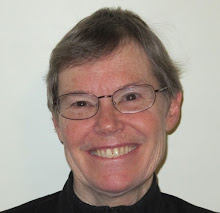This week I am gathering photographs of my aunt Elizabeth Barlow Cutler-Wotton, who died recently at age 91. She was my mother's younger sister. In childhood I called her "Aunt Betty" and in later years she preferred to go by Barlow.
This photo of Barlow was taken in October 1997 when she was 76. She was visiting our home in western Massachusetts and holding our cat Sevda.
The decorative plate in front of her is an old family heirloom, part of a set of Wedgewood dishes that my mother had inherited long ago from "Aunt Harriet."
I never met Aunt Harriet, nor did I have a clear idea about her exact relationship to our family, but her name became familiar over the years in connection with various treasures. I learned that she traveled widely and brought home unique items. My favorites include an embroidered Russian peasant shirt (which I once wore in a dance performance) and an unusual necklace with amber beads (which I still wear on occasion). I also associate her with these Wedgwood plates of "Ivanhoe" design. We read Ivanhoe in the Danvers schools and could recognize the names of the characters on the china: Lady Rowena, Friar Tuck, the Black Knight, the Templar and Gurth, the swineherd.
In 1957 when my family moved into our larger house and finally had a real diningroom, my mother put Aunt Harriet's china on display in a corner cabinet there. We liked the lovely Wedgwood blue. I think my mother took that color into account as she planned the curtains and wall color for that room.
Today, searching in attic boxes for photos of Barlow, I was surprised to discover a photo of two people unknown to me, but labeled in my mother's handwriting, "Uncle Harry and Aunt Harriet." I'm glad that she also wrote their full names: Henry Thatcher Fowler and Harriet Nesmith Fowler. Aha! My mother also had the middle name Nesmith, so there's a clue of possible family connection. I'll leave that research to another day.
For today, I'm creating a photo album in memory of Aunt Barlow.







